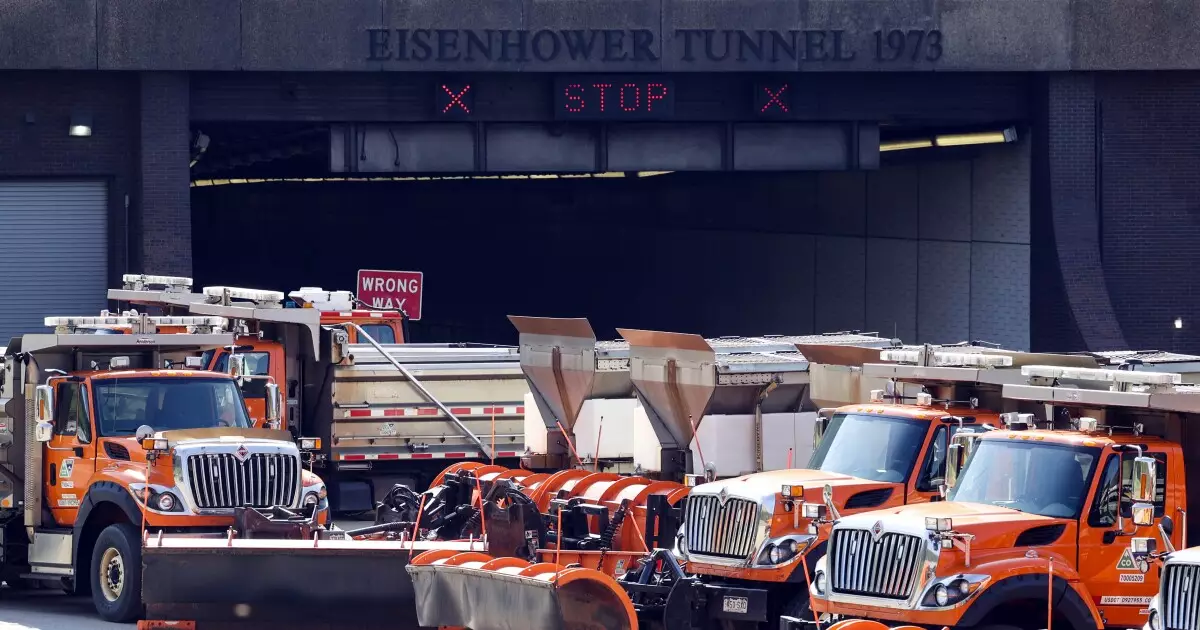In a stark display of fiscal reliance on both litigation and evolving state legislation, Colorado’s Statewide Bridge and Tunnel Enterprise (BTE) is gearing up to sell $212.45 million in insured revenue bonds. The outcome of crucial court cases, particularly regarding the state’s Taxpayer’s Bill of Rights (TABOR), casts a long shadow over this financial endeavor. While proponents of TABOR argue it is essential for fiscal responsibility, the reality suggests that such restrictions may stifle necessary infrastructure funding, presenting a paradox for responsible governance.
BTE’s financial strategy may seem sound at first glance, backed by upgraded ratings since their last issuance. However, the uncertainty surrounding bridge safety surcharge revenues, a primary funding source, illustrates a government reaching for funds while navigating murky legal waters. The expectation that this revenue will be stable relies heavily on pending litigation—a precarious position for any state-operated entity, especially one that has already faced challenges relating to its fee structures.
The Fragile Backbone of Infrastructure
Established in 2009 via Colorado’s FASTER Act, BTE’s original mission was to tackle the formidable issue of bridge safety through dedicated funding mechanisms. The introduction of a bridge safety surcharge, gauged based on vehicle weight, has the potential to generate substantial revenue. With projections of $116 million in fiscal 2025, such revenue would ostensibly ensure BTE’s ability to meet its financial obligations. However, recent lawsuits jeopardize this very outcome, limiting access to funds until a non-appealable judgment is handed down.
This situation exposes a critical flaw in state budgeting practices: the reliance on fees misclassified as “charges” rather than taxes. Such maneuvers exploit loopholes within TABOR, a law that has restricted Colorado’s budgetary flexibility since its inception in 1992. The plaintiffs’ contention that the state is circumventing TABOR through the guise of fees instead of seeking voter approval for new taxes raises serious questions about the ethical implications of using legal intricacies to shield financial practices from public scrutiny.
The Consequences of TABOR’s Constraints
TABOR, revered by some as the gold standard of fiscal restraint, has arguably led to chronic underfunding of key public services and infrastructure—a point echoed by proponents of reform such as Representative Sean Camacho. To generate sustainable revenue and foster growth, a reevaluation of TABOR’s stringent controls seems imperative. The looming fiscal shortfall of over $1 billion for the upcoming fiscal year starkly underlines the need for a fresh discourse around state funding policies.
The tension between fiscal conservatism and necessary public investment presents a tough dilemma. Advocating for greater fiscal latitude does not equate to abandoning accountability; rather, it reflects an understanding that modern infrastructure needs cannot be met by a 1992 model of governance. The struggle illustrated by BTE’s bond sale encapsulates a broader narrative in Colorado—one of innovation versus stagnation, growth versus suffocation by outdated governance structures.
A Tenuous Financial Future
The $212.45 million bond sale emerges alongside a backdrop of faltering financial projections and potential legal upheaval. The bond itself is positioned as a third lien on bridge surcharge revenue, trailing behind $1.44 billion of senior revenue bonds—a risky endeavor that requires a delicate balancing act. The assurance from agencies like S&P and Moody’s regarding bond ratings does not mitigate the fundamental instability posed by uncertain revenue streams.
As we push forward into a period of increased population growth in Colorado, infrastructure revenue will undoubtedly face pressure to evolve. The current financial framework, characterized by surcharges and fees, may need significant reform to sustain a state that dares to pursue high aspirations. Should TABOR continue to restrict necessary investment and development, Colorado might find itself caught in a damaging cycle of debt and litigation, hindering its capacity to build a resilient infrastructure for its citizens.
The complexities entwined within this financial operation are symptomatic of a larger governmental dysfunction where desperately needed public investment is held hostage by legal battles and archaic legislative structures. Moving towards a future that prioritizes growth and sustains infrastructure requires addressing these foundational issues, ultimately striving for a balance between taxpayer safeguards and the genuine needs of a growing state. The sustainability of Colorado hangs in the balance as it grapples with these challenges, and the solution could very well dictate the path forward for Colorado governance itself.

